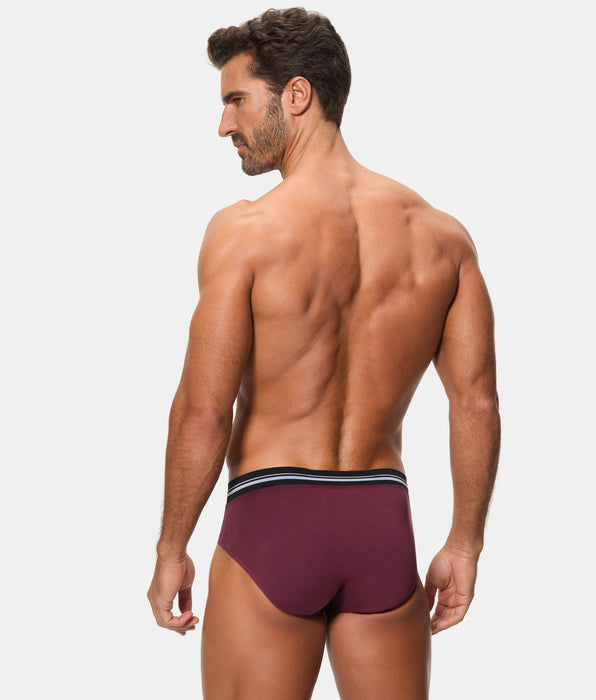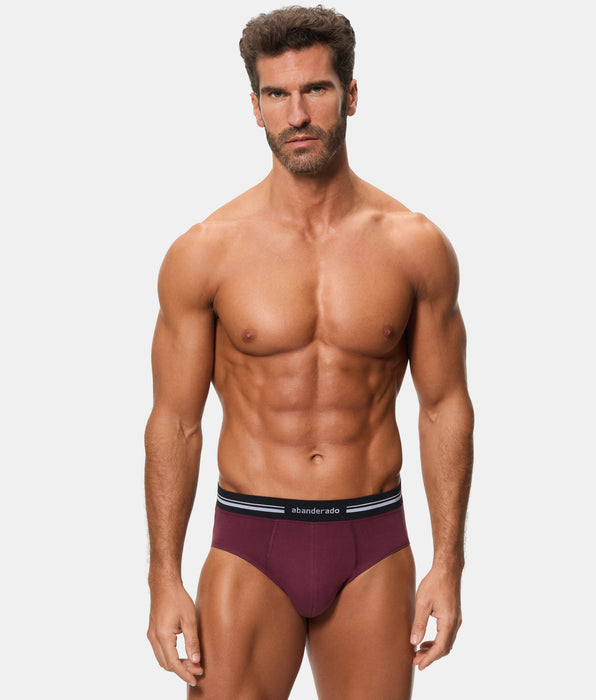In the fashion industry, labels play a crucial role for both manufacturers and consumers. Although often overlooked, different
types of clothing labels contain essential product information, such as care instructions, material type, and size.
Types of clothing labels according to the material
One of the most important factors when choosing a label is the material it's made of.
Underwear labels should be soft to the touch , durable, and not cause skin irritation, as they will be in direct contact with the body. These are the most common materials:
Polyester labels
Polyester labels
are the most commonly used in the textile industry . This material is durable, wash-resistant, and doesn't fade easily, making it an ideal choice for frequently washed underwear. However, polyester can be somewhat rough, so if not designed correctly, it can cause discomfort or skin irritation.
Cotton labels
Cotton is one of the softest and most natural materials, so cotton labels are highly recommended for underwear. These labels are not only comfortable against the skin but
also eco-friendly. The only drawback is that they can wear out more quickly than polyester labels with frequent use and washing.
Satin labels
Satin labels are
extremely soft and elegant . They're primarily made of polyester, but the satin finish gives them a much smoother, more pleasant texture. These labels are ideal for delicate garments or luxury lingerie, as they provide a premium feel without compromising durability.
Nylon labels
Nylon labels are known for their durability and strength. They're
lightweight, flexible, and dry quickly , making them perfect for activewear or garments that need to withstand heavy use. While they're not as soft as cotton or satin labels, their durability is a plus.
Cardboard or paper labels
In most Abanderado lines, we use external paper tags , with all the information on size, composition, and garment care. Unlike permanent textile tags, these hangtags are temporarily placed on garments and are usually removed before use for greater convenience.
Types of clothing labels according to their function
Men's underwear labels can serve different functions depending on the information they include or their purpose. These are some of the most common types:
Flagman's Multifunction Labels
In the case of Abanderado, our labels are multifunctional, providing different types of information about the garment. To understand them correctly, here are some guidelines on how to read them with an example:
On the
front it appears:
- The product code: in this case, A0525.
- The size: Spain/Portugal and the international size.
- Tax data.
On the
back it appears:
- The washing symbols.
- The composition of the garment.
- A numbering system for the garment's traceability, so we can internally know when and where it was produced.

Composition tags
These labels inform consumers about
the materials the garment is made from . Knowing the type of fabric used is crucial for those with allergies or sensitivities to certain materials, as well as for those looking for specific garments such as cotton, microfiber, or blended underwear.
Care labels
Care labels provide
detailed instructions on how to wash, dry, and iron the garment to prolong its lifespan. For men's underwear, this information is critical, as improper washing can damage the elastic or more delicate fabrics, affecting their comfort and appearance.
Size labels
Although it may seem obvious, size labels are essential for underwear. They provide the customer with
information about the garment's size , ensuring a proper fit. They often include measurements in different sizes (S, M, L, XL) or specific dimensions like waist circumference in centimeters or inches.
Brand labels
These labels typically
include the brand logo or the manufacturer's name . While in some cases they are the same as the composition or care labels, other times they are added as a separate label. These labels are essential for reinforcing the brand's identity and creating a connection with the customer.

Types of clothing labels according to their placement
The location of the label on a garment is another important factor to consider, especially in terms of comfort. Here are some common locations:
Internal labels
These are the most common and
are sewn directly into the garment , usually on the back, near the waistline. Although functional, these labels can cause discomfort if they are too large or made of a material that irritates the skin.
Printed labels
In recent years, labels
printed directly onto the fabric have begun to be used. This type of label causes no discomfort and doesn't add bulk to the garment, making them perfect for tight-fitting underwear. Furthermore, since they have no edges, they eliminate any risk of skin irritation.
In some Abanderado lines, specifically
the Sensitive and Regul'activ lines, you'll find this type of label , also known as pad print or tagless. In addition to added convenience, washing and sizing information is preserved by being printed directly on the fabric.
External tags
Some brands choose to place the label on the outside of the garment, usually as a
design or branding element . These labels are typically sewn into the back of the elastic or on the sides and can be an option for those who want to highlight their brand logo more prominently.
The different types of men's underwear labels are a detail that
can make a difference in both comfort and functionality . From the materials and placement to their style and the information they provide, choosing the right labels can improve the customer experience and reinforce the brand's identity.



























